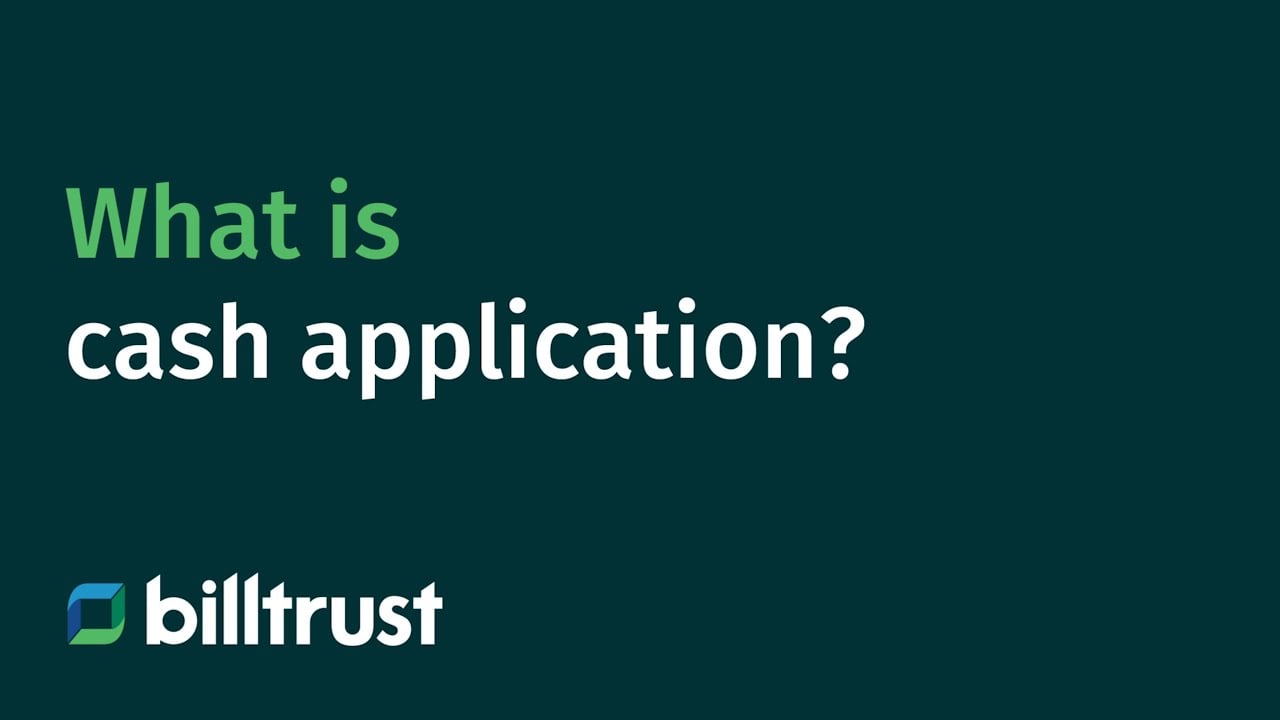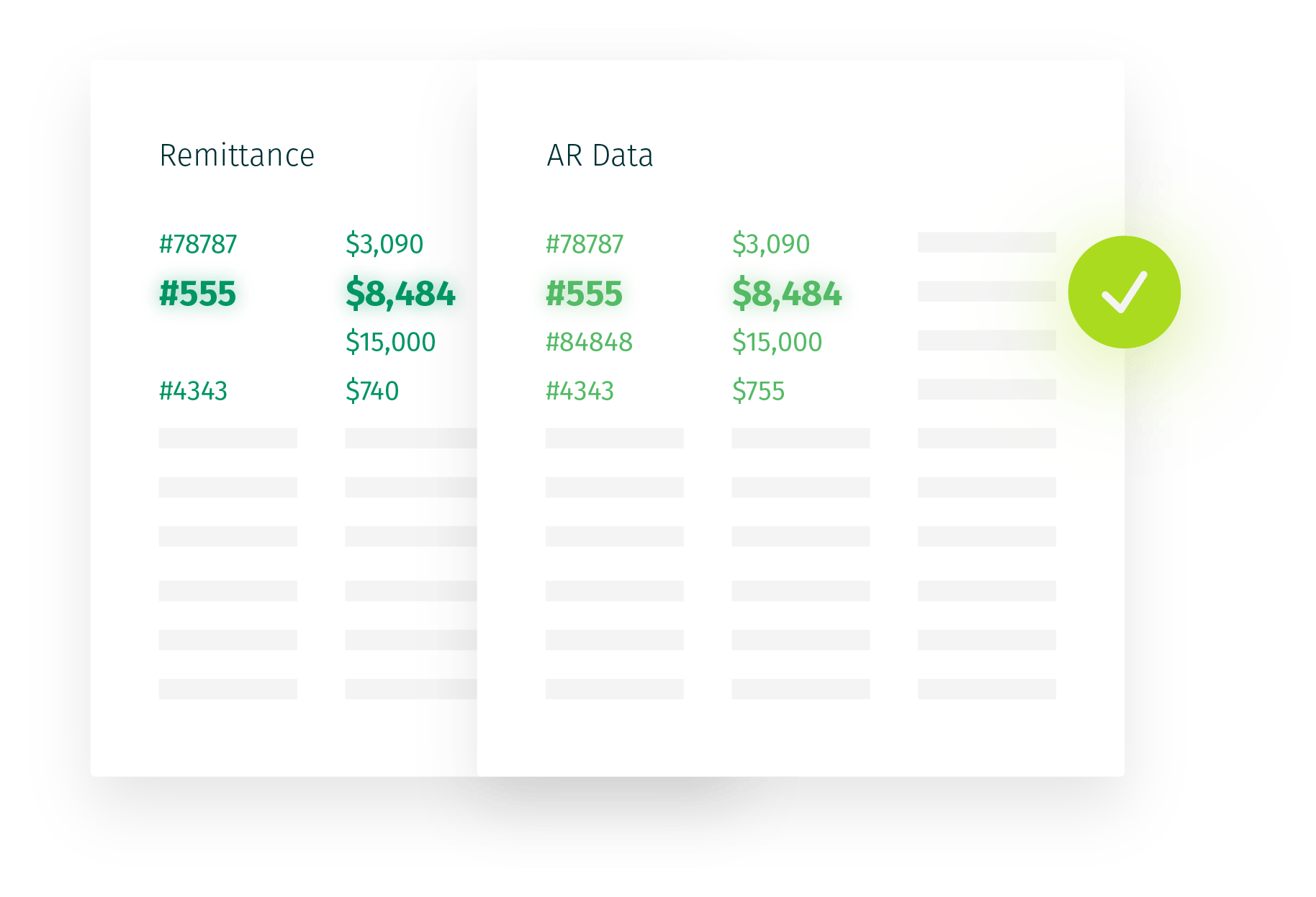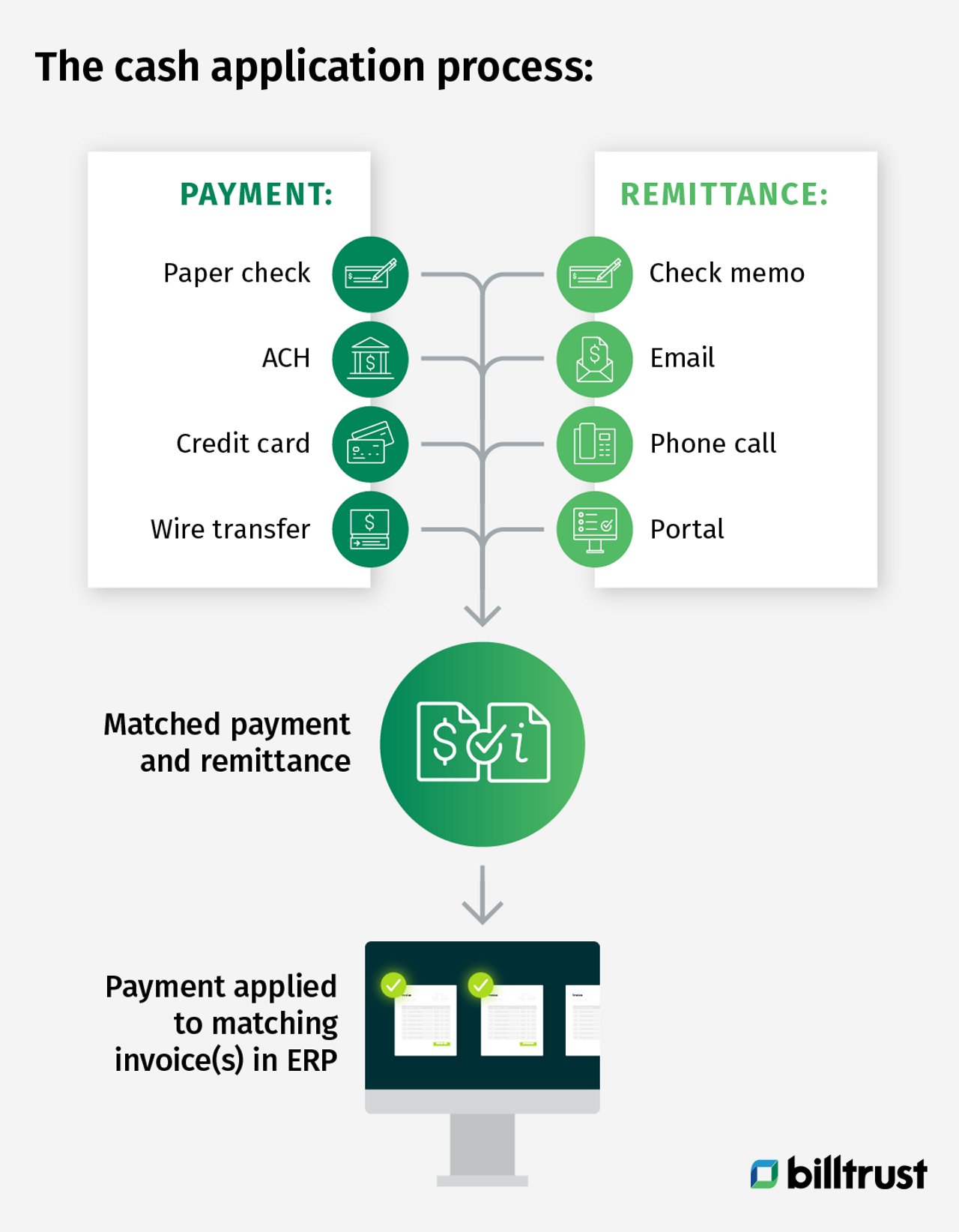
Cash application is the process of matching a payment from a customer to the corresponding invoice being paid in the seller's accounts receivable ledger. It is an essential part of accounts receivable management.

What are the elements of cash application?
The main elements of cash application are as follows:
Payment: The payment is the funds transferred from the buyer to the supplier. Payments come in many forms. Paper payments include paper checks. Electronic payments include wire transfers, ACH, procurement card and virtual credit card payments.
Remittance advice: Also known simply as remittance, remittance advice is the data that describes why a payment is being made. Remittance advice can include the invoice number or numbers that the funds are paying off. It can also include other information about the payment, for example, it could include a note that the buyer is only paying 75% of the invoiced amount because the delivered products were damaged.
Remittance advice is sometimes included alongside payment, i.e. a paper check with the invoice number written in the memo section, but remittance can also be transferred separately from the payment in an email, phone call or web portal.
Invoice: The invoice is the original bill that prompted the payments to be made. A cash application specialist uses the remittance advice to understand what invoices are being paid by the funds transferred from the buyer.
Once the cash application specialist has “matched” the payment to the invoice(s), they will mark the invoice(s) as paid in the supplier's Enterprise Resource Planning (ERP) system.

What makes cash application complex?
In the past, when the vast majority of B2B payments were made by paper check, cash application was a relatively simple, though laborious process. Paper checks have remittance advice printed typically have the remittance advice printed right below the check itself, so cash application specialists were able to match those checks to their corresponding invoices.
But electronic payments have many advantages over check and have become more popular. Electronic payments often do not come with remittance advice attached – it is often sent separately in an email, phone call, fax or buyer’s portal.
Now, cash application specialists have to first connect the payment to the remittance advice and only THEN can they match the payment and remittance to the invoice.
Compounding this are the complications of payments meant to pay off multiple invoices, short pays due to discounts or disputes and errors in remittance advice.
Why is cash application important?
When a company receives a payment, they must apply it in order to be sure that they have a right to those funds. Once a company knows the funds are rightfully theirs, they can then use that money to fund payroll, make investments or disburse profits to shareholders. The faster they can apply cash, the faster they can use it.
Most B2B sales are made on credit. This means that the supplier agrees to deliver a product or service to the buyer with payment expected at a later date. This is called extending credit. But a responsible supplier will not extend an infinite amount of credit to a buyer. They will set a limit based on many factors. When a buyer uses their entire line of credit to make a purchase from a supplier, they cannot make another purchase until the invoice associated with their purchase is paid off. If a buyer sends a payment to a supplier, but the supplier’s cash application process is slow, then replenishment of the buyer’s credit will be delayed, and the supplier will miss out on sales they could have made between the moment they received the buyer’s payment and their application of the funds and replenishment of buyer credit.
How can I improve Cash Application?
Automation is essential to improving a company's cash application process. Many companies are already using some degree of automation in their cash application.
It is very common for companies to use bank lockboxes to receive check payments. Banks read their incoming checks either with data entry specialists or with robots and digitize the payment and remittance information. The banks will then transfer this payment and remittance data to the company’s ERP. The ERP system will generally have some ability to match the payments and remittance data to open invoices in the system.
But ERPs are not optimized for this process and they will generally not be able to match payments meant for multiple invoices, payments sent without remittance or short pays to open invoices.
The rate at which an automated solution can match payments to invoices with no human intervention is referred to as a “match rate.”
Electronic payments often come without remittance advice attached. When remittance is sent separately, most ERPs cannot match incoming electronic payments to open invoices without human intervention.
But in recent years, A/R automation vendors have made great strides in creating specialized cash application automation software. Cash application automation software integrates with a business’ ERP system to match incoming payments regardless of channel to their appropriate open invoices. When payments can be accepted and matched with no human intervention, it is referred to as straight-thru-processing (STP).
Modern cash application automation vendors can achieve match rates near 100%. Even the process of resolving disputes over partial payments can be improved by the machine learning enabled cash application software.
To learn how accounts receivable automation can improve your cash application process, connect with Billtrust.

